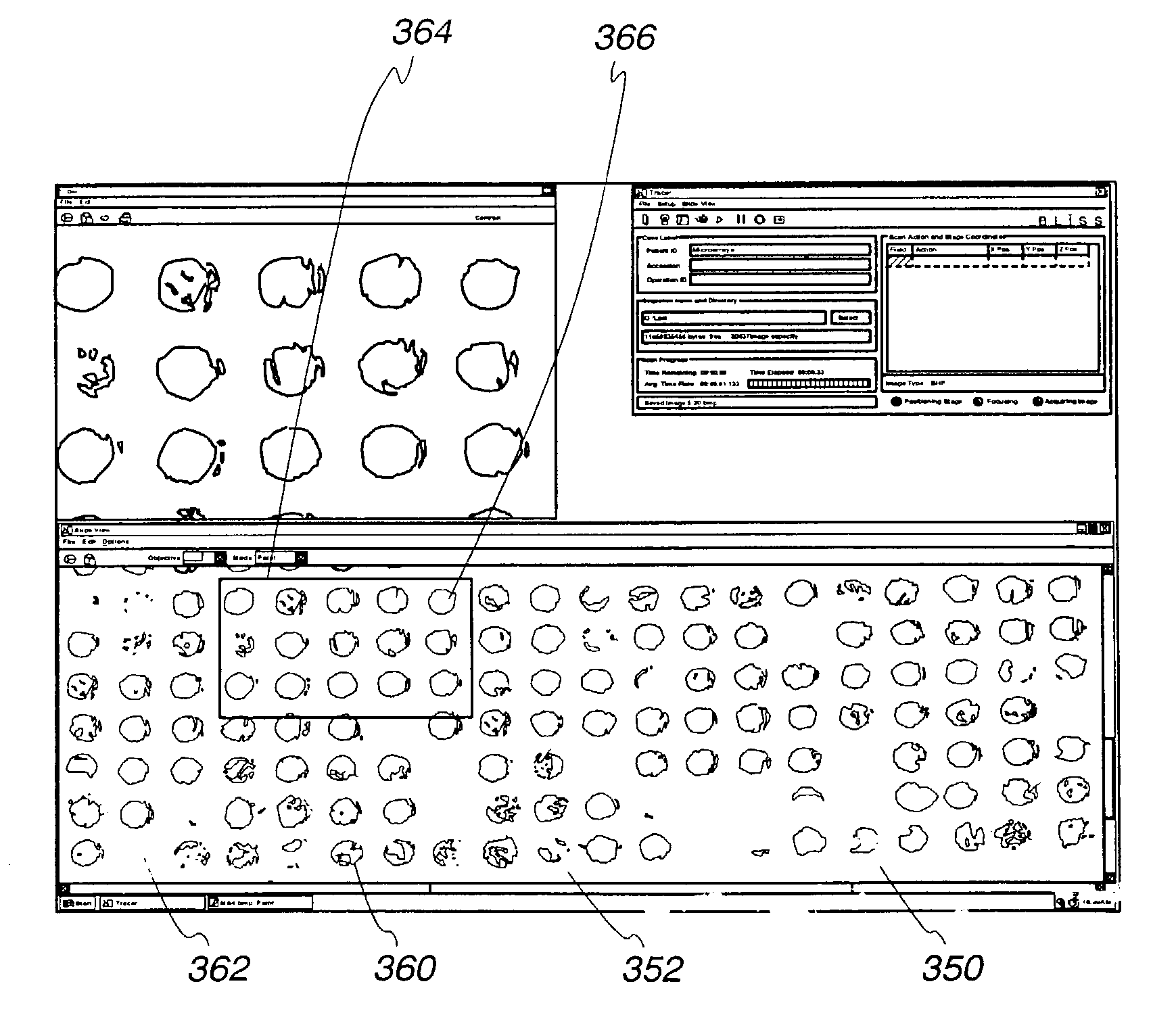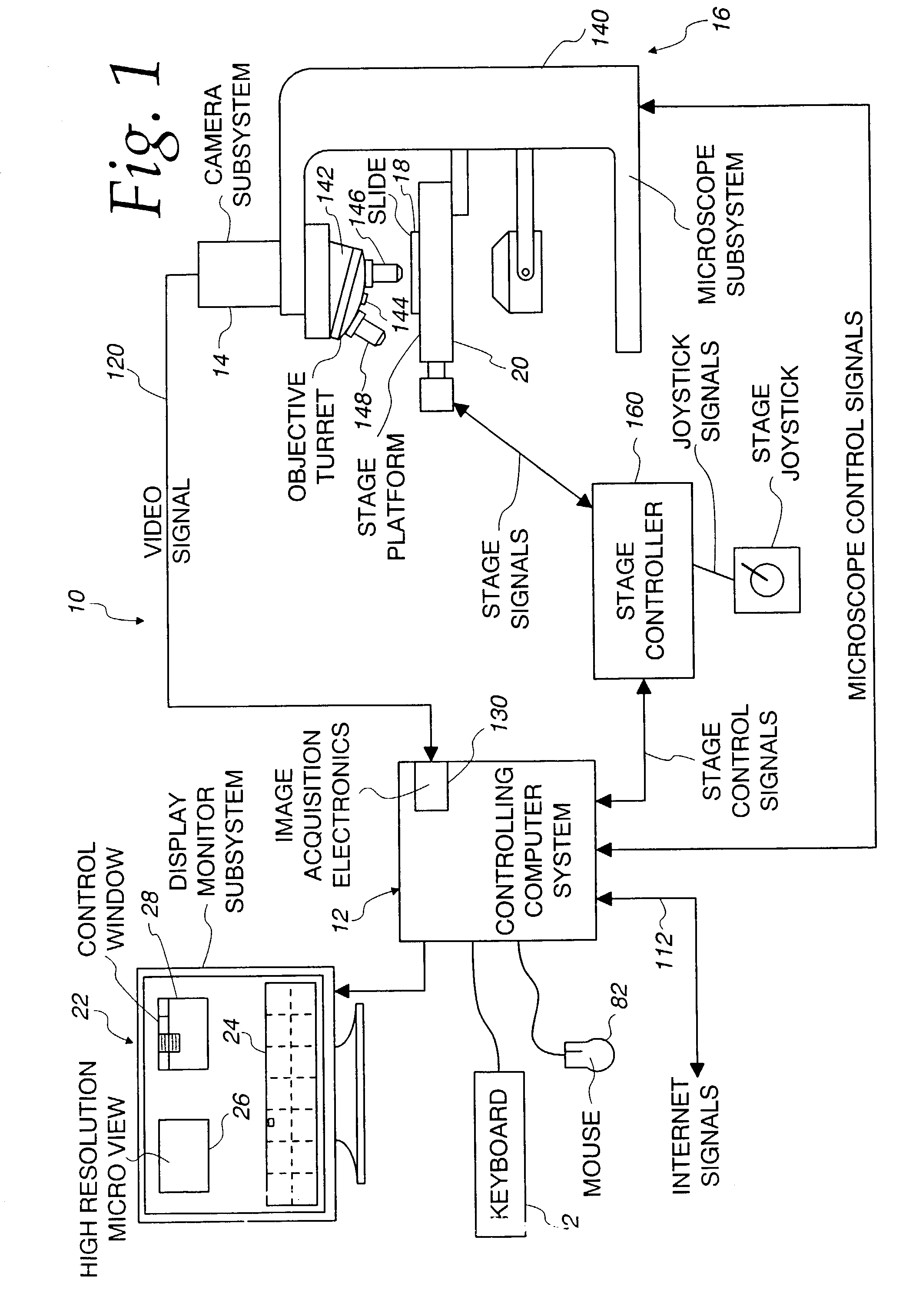Method and apparatus for processing an image of a tissue sample microarray
a tissue sample and microarray technology, applied in the field of methods and apparatus for processing an image of a tissue sample microarray, can solve the problem that tissue dots may even be missing, and achieve the effect of reducing the number of controls
- Summary
- Abstract
- Description
- Claims
- Application Information
AI Technical Summary
Benefits of technology
Problems solved by technology
Method used
Image
Examples
Embodiment Construction
[0041]Referring now to the drawings and especially to FIG. 1, an apparatus embodying the present invention is shown therein and generally identified by reference numeral 10. The apparatus 10 is adapted for synthesizing low magnification and high magnification microscopic images of tissue sample microarrays. The apparatus 10 includes a computer 12 which is a dual microprocessor personal computer in combination with a Hitachi HV-C20 video camera 14 associated with a Zeiss Axioplan 2 microscope 16. The computer system 12 receives signals from the camera 14 which captures light from the microscope 16 having a microscope slide 18 positioned on an LUDL encoded motorized stage 20. The encoded motorized stage 20 includes a MAC 2000 stage controller for controlling the stage in response to the computer 12.
[0042]A microscope slide 18 includes a plurality of tissue sample microarrays 19 each comprising a tissue sample microarray made up of a grid or array of circular tissue sample sections or ...
PUM
| Property | Measurement | Unit |
|---|---|---|
| cellular structure | aaaaa | aaaaa |
| data structure | aaaaa | aaaaa |
| optical microscope | aaaaa | aaaaa |
Abstract
Description
Claims
Application Information
 Login to View More
Login to View More - R&D
- Intellectual Property
- Life Sciences
- Materials
- Tech Scout
- Unparalleled Data Quality
- Higher Quality Content
- 60% Fewer Hallucinations
Browse by: Latest US Patents, China's latest patents, Technical Efficacy Thesaurus, Application Domain, Technology Topic, Popular Technical Reports.
© 2025 PatSnap. All rights reserved.Legal|Privacy policy|Modern Slavery Act Transparency Statement|Sitemap|About US| Contact US: help@patsnap.com



